Multispectral survey of turf and grass cultivation
The specialized branch of agronomy that deals with the production and maintenance of turfgrass, characterized by a very high technological content, and where important contributions are at stake to ensure the excellence of the cultivations, has certainly not missed the potential offered from the multispectral survey, for the in-depth knowledge of the biological, chemical and physical phenomena that characterize the plots.
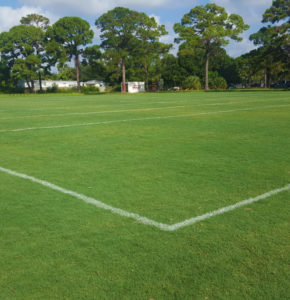
High quality grassy meadows, such as golf courses, soccer fields or gardens, require a significant supply of water and nutrients, as well as intensive maintenance. It is certainly an area of employment characterized by high maintenance costs, where particularly efficient management is required. In particular, it is increasingly important to plan the agronomic management of the turf industrial cultivation in such a way as to make it as site-specific as possible. Within the plots, it is important to map the phenological variability and the diversification of the interventions, with a view to the sustainability of the cultivation from an economic and environmental point of view.
The applications of the multispectral survey are experiencing great technological development and great interest mainly because they are addressed to the in-depth knowledge of the environmental reference matrix (vegetation, soil, water) with a view to productive efficiency (variability mapping), environmental sustainability (site agronomic intervention), to rationalizing the use of natural resources (monitoring of water supply and location of deficiencies), environmental protection of ecosystems (protection of biodiversity), but above all with a view to the safety of environmental services (monitoring quarries and landfills), settlements (hydrogeological risk) and food products (eco-sustainable agricultural production).
| Agriculure and Forestry
· Water supply management · Rationalization of pesticide · Variable fertilizer distribution · Yield estimation and comparisons · Prevention of critical pathologies · Classification of species · Protection of ecosystems |
Environmental monitoring
· Spill control in water bodies · Bathymetry of shallow waters · Control of drains in soils or water bodies · Classification of polluting materials · Control of quarries and landfills · Mapping of leachate flows · Identification of illegal landfills |
| Industrial sites
· Classification of materials in deposits · Inspection of industrial waste · Inspection of industrial plants · Inspection of spills and roofs |
Geology
· Soils classification · Physical-chemical characterizations of soils · Mapping of soil compaction · Mapping of paleo-river beds |
The vegetative trend of the turf, linked to seasonal climatic conditions, can be monitored through multispectral survey and vegetation indexes, in correlation with the data acquired from other sensorial platforms on the ground, to estimate the nitrogen fertilization requirements, to evaluate the effects of mowing, and to plan irrigation flows and methods (sub-shallow drip irrigation or spray irrigation).
The conditions of vegetative stress of turf, fungal attacks, water shortages must be diagnosed promptly with data acquisition systems that provide tools and information more detailed and useful to the green keeper. Within a competitive market, and attentive to environmental sustainability, it is no longer sufficient to regulate fertilizers and interventions on the basis of visual analysis, nor those simple diagnostic tools of instantaneous detection, which photograph the state of health, reporting the NDVI index values, often in an unreliable and inaccurate manner.
Thanks to new sensor-based proximal sensing technologies installed on board remotely piloted aircraft, it is possible to map the variability inside the turf farms, in golf courses, in soccer fields and in gardens, obtaining useful and above all rigorous cartographic products from the geographical, geometric and radiometric point of view, with great efficiency in terms of time, cost of the survey, precision and accuracy of the products, with an important added value about the agronomic knowledge of the crop.
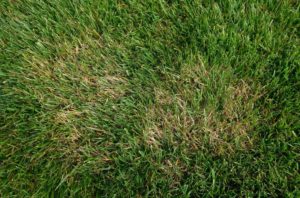
The know-how of the agronomist, or better in this case of the green keeper, who knows the critical aspects of the plots and traces the interventions carried out, is fundamental in the multispectral survey planning phase, because according to his indications the survey will be set such a way to obtain cartographic products with a specific geometric resolution (choosing the ground sample distance of the digital maps) and spectral (choosing to use a camera with certain wavelength ranges), but above all its analysis of the obtained data and of the indices calculated will be strategic to decide the agronomic interventions to be implemented on the grass.
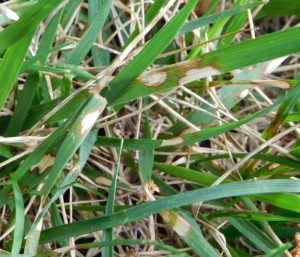
Indexes calculated on the multispectral data, as we read in the scientific literature, are variously correlated to the visual quality measurements of the discipline that studies grassy surfaces, such as density, texture, uniformity, color. These specific indices are also used to assess the effects of prolonged trampling, periods of water shortage, and different mowing methods. Other calculations between the reflectances of certain bands can instead estimate the need for certain nutrients in a specific vegetative phase. For example, if a comparison is made between two multispectral surveys shortly before mowing and immediately after mowing, it is highlighted by many that mowing affects the data collected for all visible bands with a constant increase of around 4%, but, moving to the near infrared, this increment is not recorded (Sullivan, Dana & Zhang, Jing & R. Kowalewski, Alexander & B. Peake, Jason & F. Anderson, William & Waltz, Clint & M. Schwartz, Brian. 2017). Consequently, those vegetation indexes that normalize the reflectance of the infrared on the reflectance of the red, as the most common NDVI (Normalized Difference Vegetation Index), will also drop immediately after mowing.
For these purposes, and as we will see later, it is essential to use a multispectral survey instrument that allows to investigate the turf at wavelengths distributed along the whole electromagnetic spectrum that from violet reaches the near infrared, to have the possibility to calculate indices that not only consider the red or near infrared band, but that can provide useful indications with a complete spectral screening of the culture. Very important is also the control during the extraction and processing of the geometric and radiometric data of the images that the multispectral camera acquires.
The ideal, in this type of application, is a multispectral camera which completely covers the electromagnetic spectrum from Visible to Near Infrared, and which has narrow-band configurations in certain wavelength values, such as in the Red Edge or in Near Infrared, to be able to investigate specific phenomena of photosynthetic activity, the presence of particular elements and the occurrence of physical or chemical phenomena related to vegetative development.
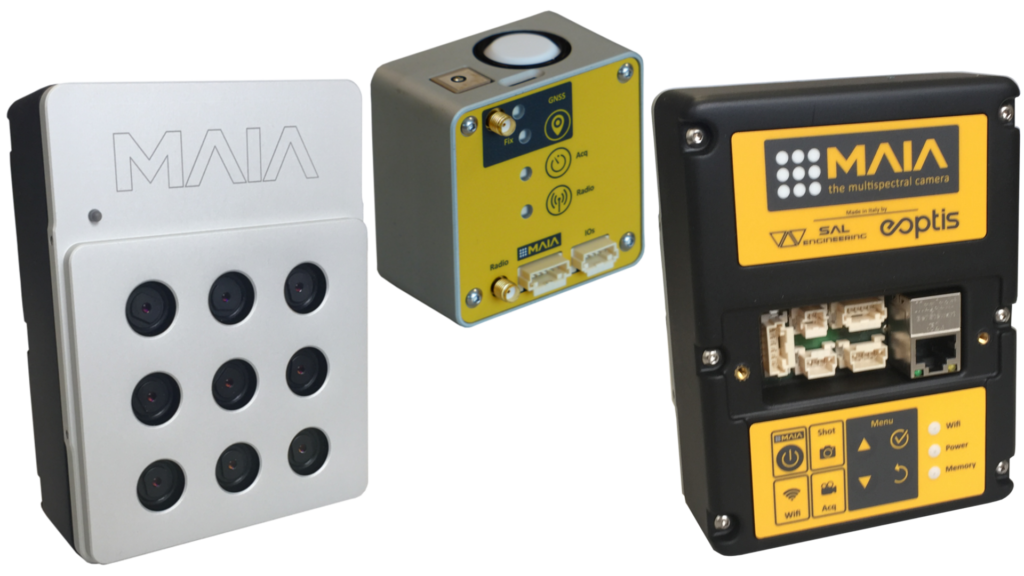
The MAIA Multispectral Camera can be used on board RPAS (Remotely Piloted Aircraft Systems, better known as drones or UAVs, Unmanned Aerial Vehicles), airplanes and land rovers in multispectral survey operations. MAIA is composed of an array of 9 1.2 Mpixel sensors (9 monochrome sensors with real band-pass filters in the MAIA S2 filter-set, and 8 monochromatic plus 1 RGB in the MAIA WV filter-set) to acquire images in the VIS-NIR spectrum. MAIA WV has the same wavelength ranges as DigitalGlobe’s WorldView-2™ satellite, from 433 nm to 950 nm. MAIA S2 has the same wavelength ranges as ESA’s Sentinel-2™ satellite, from 433 to 899.5 nm. It is a project of the highest technological value entirely Made in Italy.
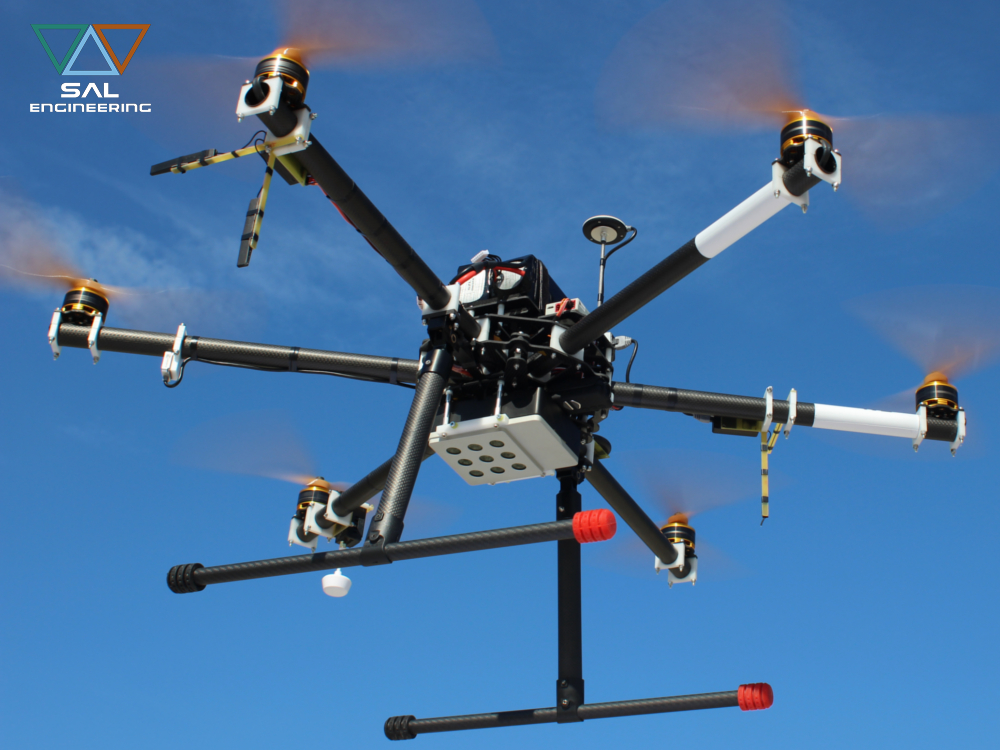
The CMOS sensors installed in MAIA have excellent characteristics in terms of sensitivity; the resolution is 1280×960 pixels and the size of the sensor pixel is 3.75 μm x 3.75 μm; each sensor is Global Shutter and acquires simultaneously: it follows that it is not necessary to stabilize the shot with a gimbal, which instead remains indispensable with rolling shutter sensors to avoid distortions and blurred pixels in the image. The high quality and radiometric correctness of the data obtained with MAIA are therefore guaranteed even in high speed flights. Each optics, of every MAIA built, is calibrated in the laboratory by 3DOM – Fondazione Bruno Kessler, and for each device the Calibration Certificate is available, with the following parameters:
- calibrated focal length;
- position of the main point;
- lens distortion parameters.
The user can interact with the camera to configure acquisition operating parameters and to manage images either via a GigaEthernet port or via integrated WiFi. Many parameters can also be configured via the keyboard using the On Screen Display in the composite video output. Thanks to a web panel, MAIA allows a precise adjustment of all the parameters concerning the acquisition, from the exposure time to the shutter frequency, while automatic configurations are available for standard operations.
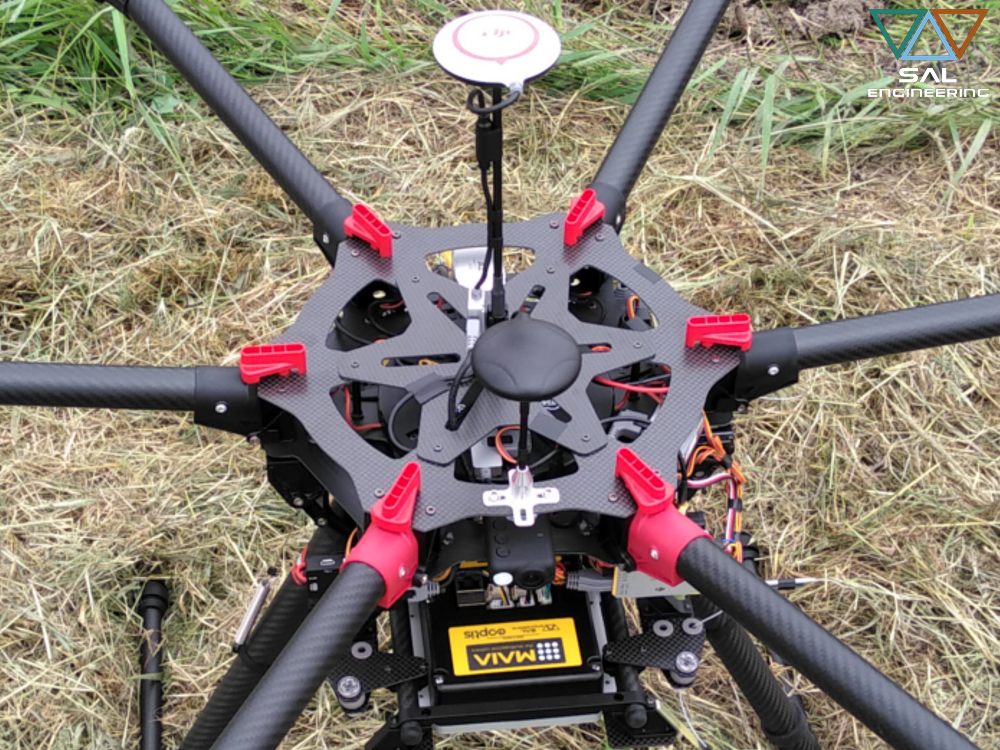
MAIA can communicate and be interconnected with different devices:
- GNSS: GPS L1 or L1 / L2; GLONASS, Galileo, Beidou, to obtain a log file with the positions of the synchronized shots (available in PPP, PPK, RTK);
- VIDEO TX for real-time transmission of images from each sensor, even remotely;
- RDX for remote control of the Camera (frame rate, selection of the video source, activation of the Wi-fi);
- GIMBAL for orientation, displacement and balancing control (an IMU integrated with 3 accelerometers and 3 gyroscopes provides orientation parameters).
The images acquired by MAIA are saved on an internal hard disk (120Gb SSD) which ensures high writing speed and the possibility of saving up to 10,000 images in 12-bit format (MAIA acquires 8-bit, 10-bit and 12-bit images).
MAIA WV, as mentioned above, consists of a RGB sensor to obtain images with real colors, and 8 monochromatic sensors with sensitivity in the VIS-NIR spectrum from 390 nm to 950 nm. Monochromatic sensors are coupled with band-pass filters which determine the wavelength intervals that can be investigated, as shown in the following graph.
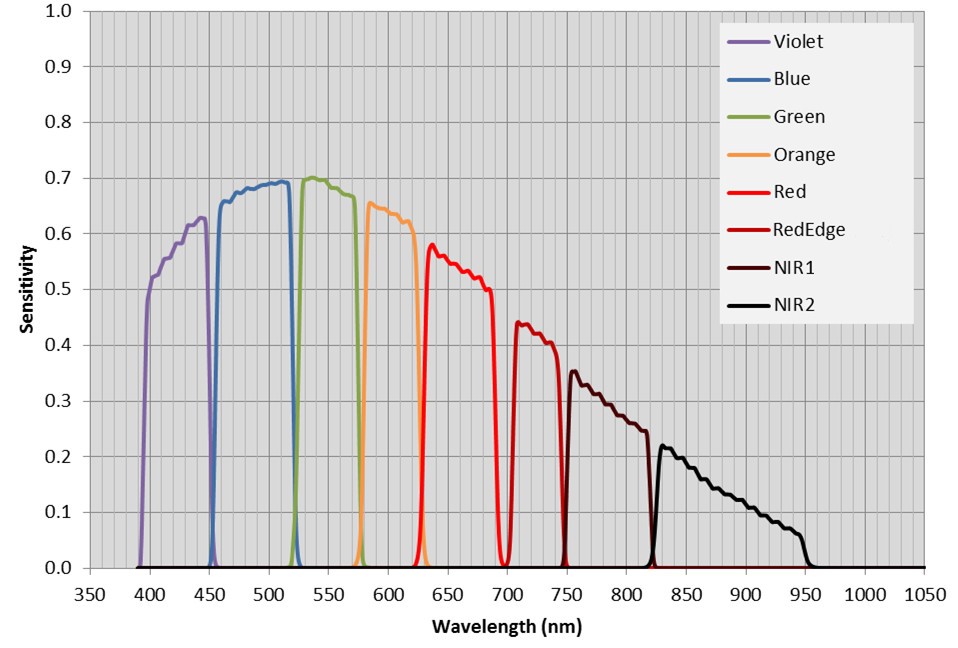
MAIA S2, on the other hand, is the multispectral camera with 9 sensors designed and developed to have 9 bands with the same wavelength ranges as the European Space Agency’s Sentinel-2™ satellite. Each sensor has a resolution of 1280×960 pixels (1.2 Megapixels) and the size of each sensor pixel is 3.75 μm x 3.75 μm. Monochromatic sensors are coupled with band-pass filters which determine the wavelength intervals that can be investigated, as shown in the following graph.
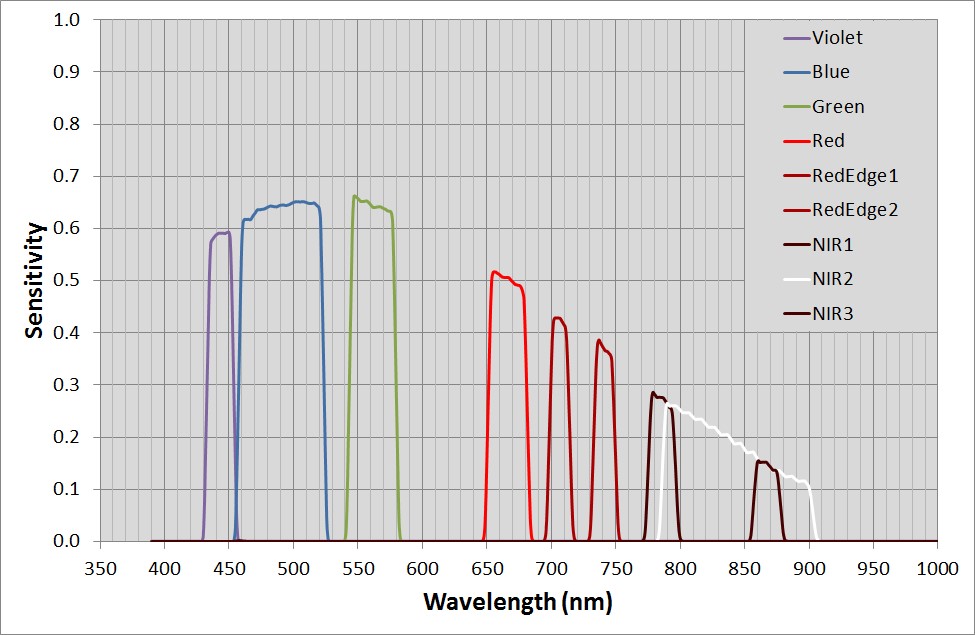
The products of the multispectral survey carried out with the MAIA multispectral camera are therefore multilayer or multichannel images corrected for radial and geometric distortion, and with the pixel-based co-registration of the radiometric information for all bands.
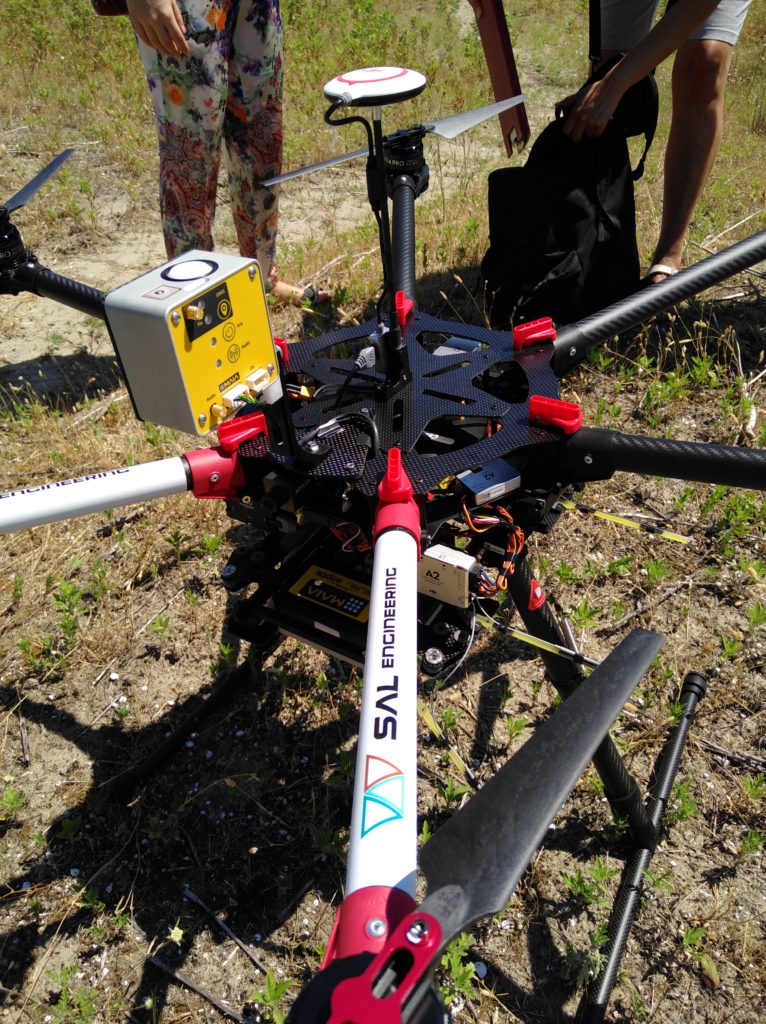
This is done by MultiCam Stitcher Pro, the software for extracting and processing images acquired with MAIA developed by 3DOM – Bruno Kessler Foundation, with which it is possible to operate the radiometric correction of multispectral images, to obtain the correct reflectance data, repeatable and comparable in different environmental conditions.
For this purpose, SAL Engineering and Eoptis have developed and patented ILS – Incident Light Sensor, an incident light sensor that records the incident and diffused environmental radiation at the time of each single shot, to conduct the radiometric correction of the multispectral data based on the conditions of real and contingent electromagnetic energy. In addition, ILS has a 6-axis inertial platform for orientation data, an environmental sensor for obtaining atmospheric pressure, temperature and humidity data, and has a GNSS receiver for geo-referencing the acquired images, also available in an RTK version for centimetric positioning accuracy. All the parameters measured by ILS are automatically recorded in a log file related to the set of images acquired, and are immediately ready for the pre-processing operations with MultiCam Stitcher Pro.
On the basis of the instructions and the operational needs of the green keeper, the multispectral survey carried out with MAIA can provide images acquired at such a level as to ensure the presence of the entire plot under investigation in the frame: on this image can be operated a flat projective transformation, thanks to the measurement of the coordinates of some markers present in the scene. Thanks to the image pre-processing software, calculations can be performed directly on the images, to obtain indexes that, with agronomic technical supervision, become a fundamental tool for the preventive diagnostics of turf pathologies and for their monitoring. For larger plots, on the other hand, it is advisable to obtain a georeferenced multispectral orthophoto from the alignment of multiple images acquired with photogrammetric strips and from the 3D model created by photogrammetric processing software.
With reference to satellite images and images obtained by proximal sensing, a great deal of academic research is underway on the formulation of indexes and calculations between bands for the agronomic study of different crops (and among these, also of grassy coverings). Equally important is the transformation of vegetation indices into prescription maps, to direct the agronomic intervention in the field.
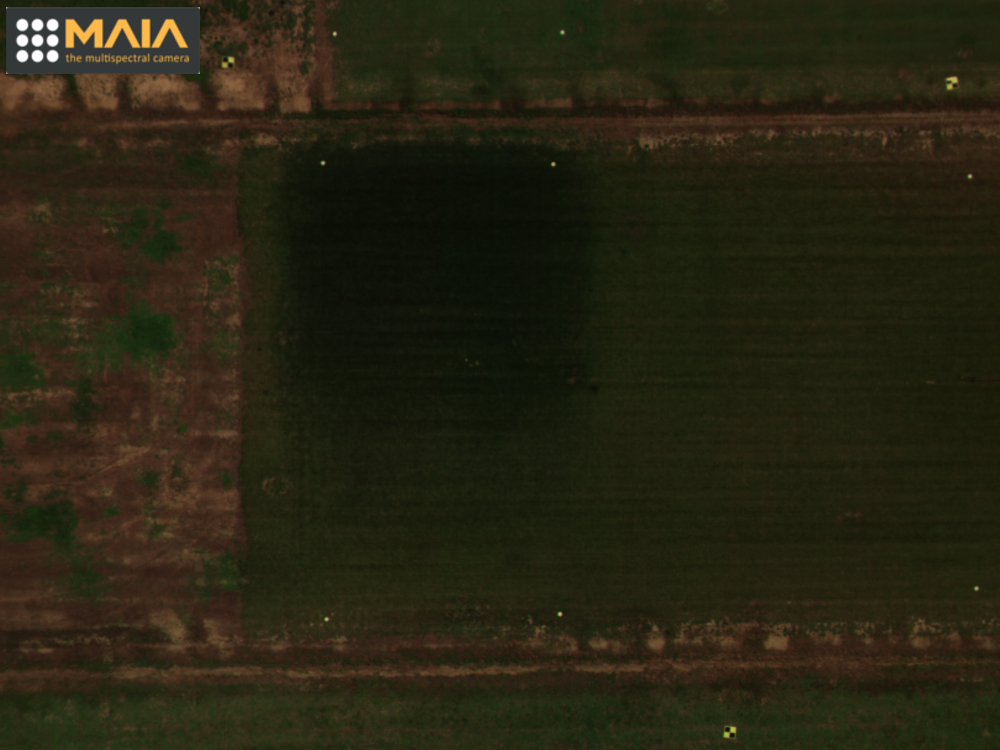
SAL Engineering, together with various operators in the sector, is involved in the research activity for the study and application of indexes and calculations on the single image or on the multispectral orthophoto obtained from the survey carried out with MAIA. Since July 2017, and then in the following years, several acquisitions were carried out using the MAIA WV filter-set in a turf farm, in a golf course and in a soccer field in Tuscany, for evaluate the contribution of the different data acquisition technologies within a monitoring and management plan for industrial cultivation and turf maintenance.
In these portions, together with the multispectral survey, measurements were carried out with technologies and methodologies typical of agronomic studies on turf, and above all agronomic interventions were traced. Scientific research is still in progress: we will limit ourselves here to the presentation of some vegetation indexes that are applicable to the diagnosis of turf according to scientific contributions in literature.
Below an image acquired in a turf farm, on which several multispectral indexes have been applied to enhance phenomena on the turf. Here is a sample list of indexes calculated:
NDVI (Normalized Difference Vegetation Index – (NIR-Red)/(NIR+Red)) – MAIA was developed with the intention of providing a functional tool for in-depth knowledge of crops thanks to the precise definition of the red interval and the differentiation in different bands of the Red Edge and NIR (Near Infrared) in order to perform differentiated calculations in the study of vegetation health and in order to normalize the most studied, widespread and applied vegetation indexes calculation on the reflectance of other wavelength ranges, such as blue, green and violet. In the next images, where not explained, the lowest values are those that tend more to black, while the higher values tend to white.
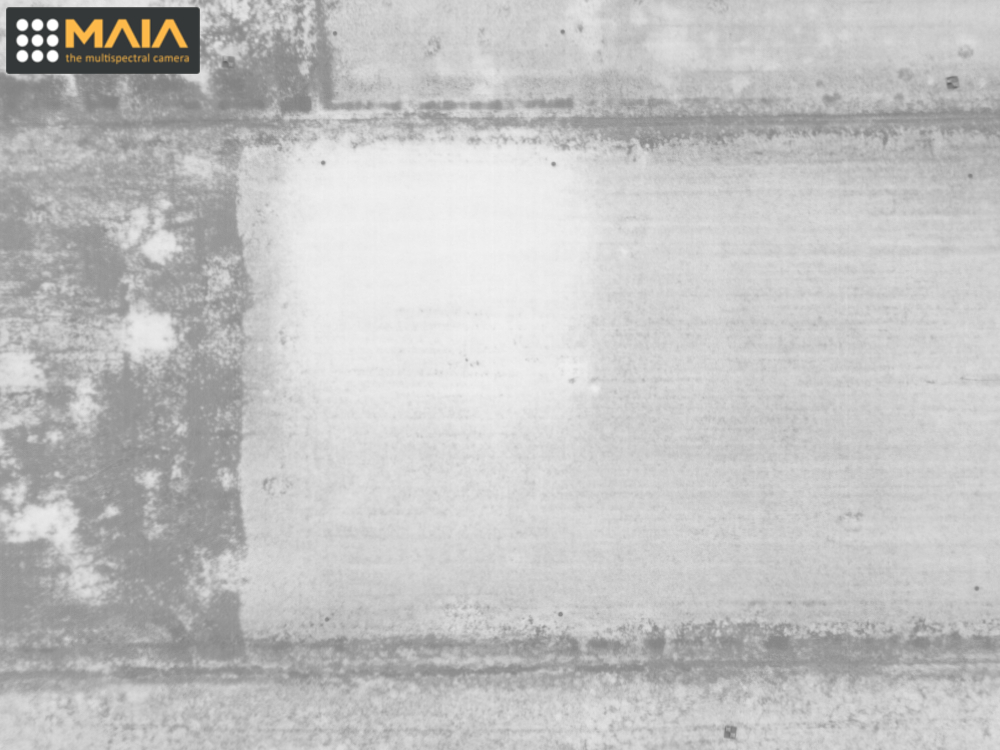
NDRE (Rededge Normalized Difference Red-Edge – (NIR-RedEdge)/(NIR+RedEdge)) – This index is very sensitive to the chlorophyll content in the leaf apparatus; it is also very useful for extracting the vegetative part from the underlying soil and for limiting the effects of the soil on the datum of reflexivity relative to the foliar apparatus of the grass cover. High NDRE values represent higher levels of chlorophyll content in grass blades: the soil has the lowest values, while unhealthy leaves have intermediate values. It is also indicated to map the variability of nitrogen-based fertilizer requirements for the foliar apparatus, but it is not a good indicator for the nitrogen requirement in the root system. The NDRE index is therefore an indicator of the state of health of the turf, and of how lush, green, uniform and compact in the leaf coverage, better than the NDVI in the summer and autumn season. Furthermore, it is a higher performing index of NDVI during a monitoring set on frequent and intra-seasonal surveys because in many cases the NDVI loses sensitivity (ie information of variability within the plot) with increasing storage of chlorophyll in the leaf apparatus and with increasing leaf coverage area.
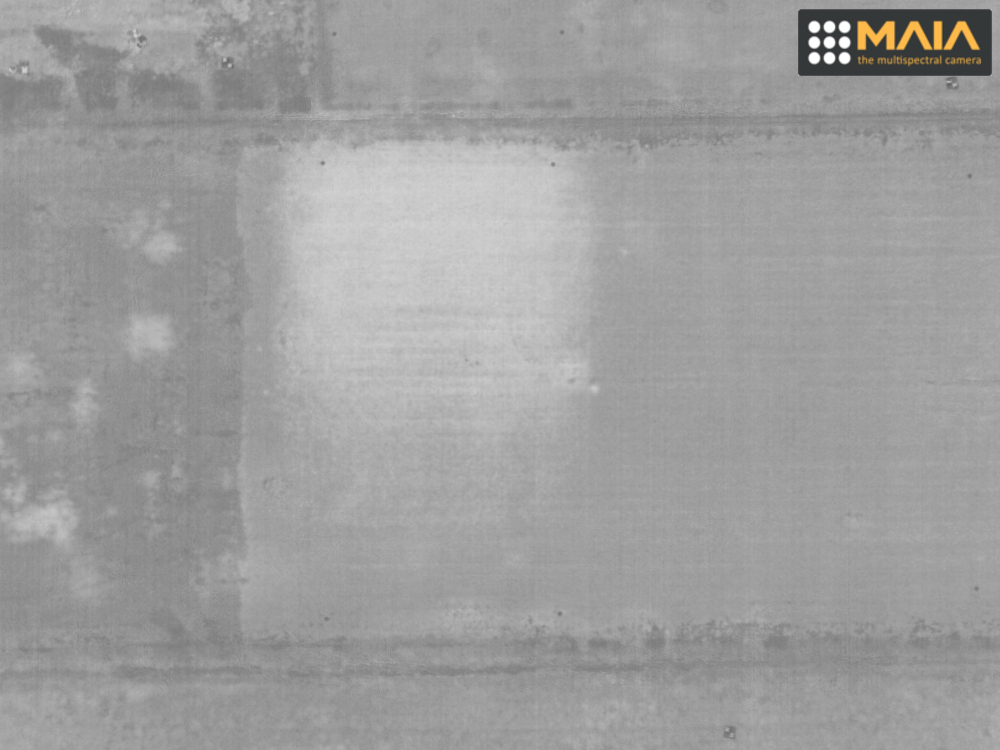
GNDVI (Green Normalized Difference Vegetation Index – (NIR-Green)/(NIR+Green)) – This index replaces green to red in the NDVI formula to highlight and differentiate the presence of chlorophyll inside the leaves of the turf: it is essential in a monitoring plan that provides for several frequent acquisitions at a set time interval, to identify the moments of activation and inter-season quiescence. Also suitable for estimating nitrogen-based nutrient requirements and for locating water shortages.
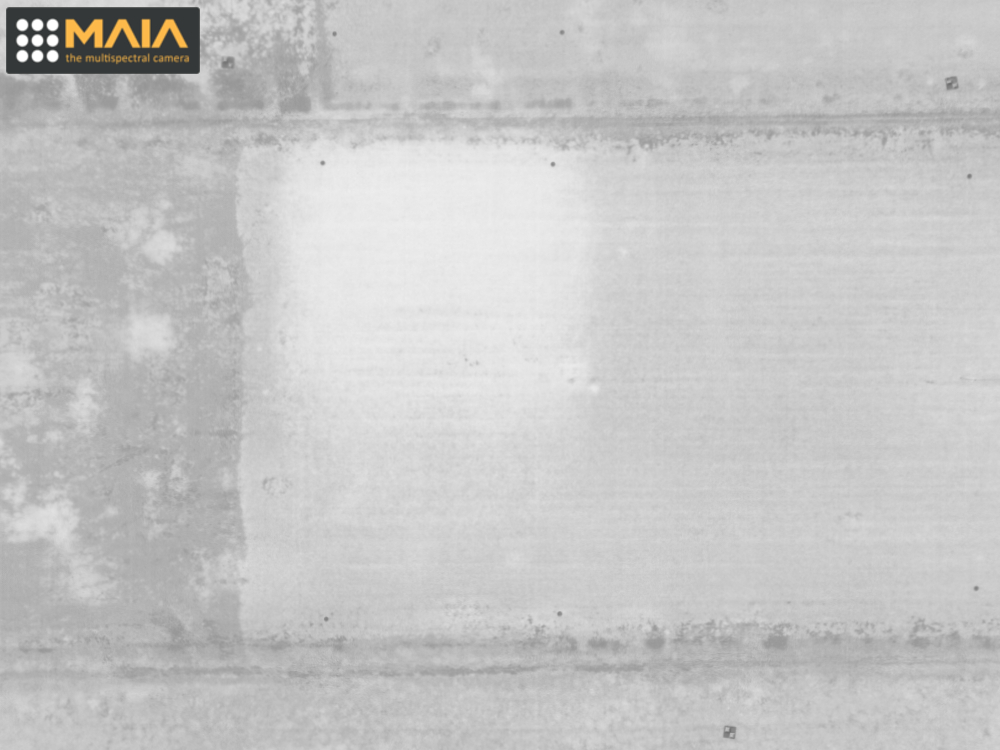
EVI (Enhanced Vegetation Index – (2.5*((NIR2-Red)/((NIR2+6*Red-7.5*Coastal)+1))) – In areas characterized by high vegetative density (such as turf), the reflectance information obtainable in the high frequencies of the Blue or the Purple are strategic in the measurement of these vegetational indices, to penetrate the surface of the leaves and evaluate the presence of water and for map the variability in terms of nutrient inputs, before and after the scheduled treatments. Tendentially, the EVI index shows values from 0.2 to 0.8 for photosynthetically active vegetation, thus classifying it from the worst to the best state of health.
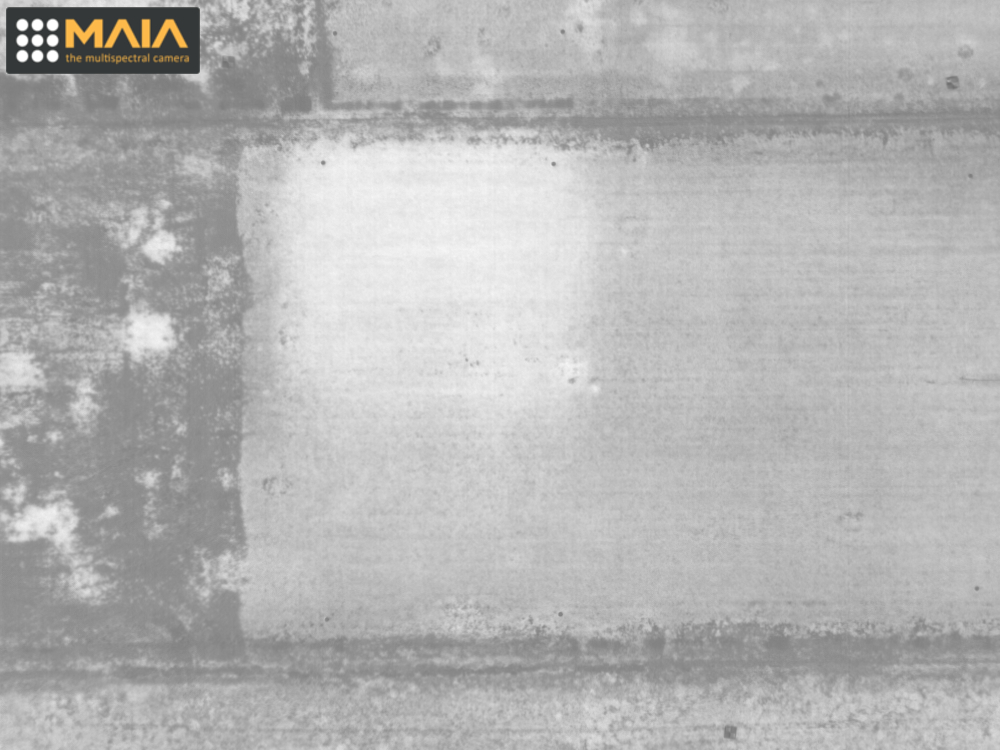
NRGRI (Normalized Red Green Ratio Index – (Red-Green)/(Red+Green)) – The relationship between the reflectance of the turf in the red band and the reflectance in the green band, in certain environmental and phyto-vegetative conditions, is an important test to assess the vegetative health of the grass cover, especially if related to other site measurements- specifications. In this index, the lowest values (which are those that tend more to black, while the higher values tend to white) highlight the areas with greater vigor.
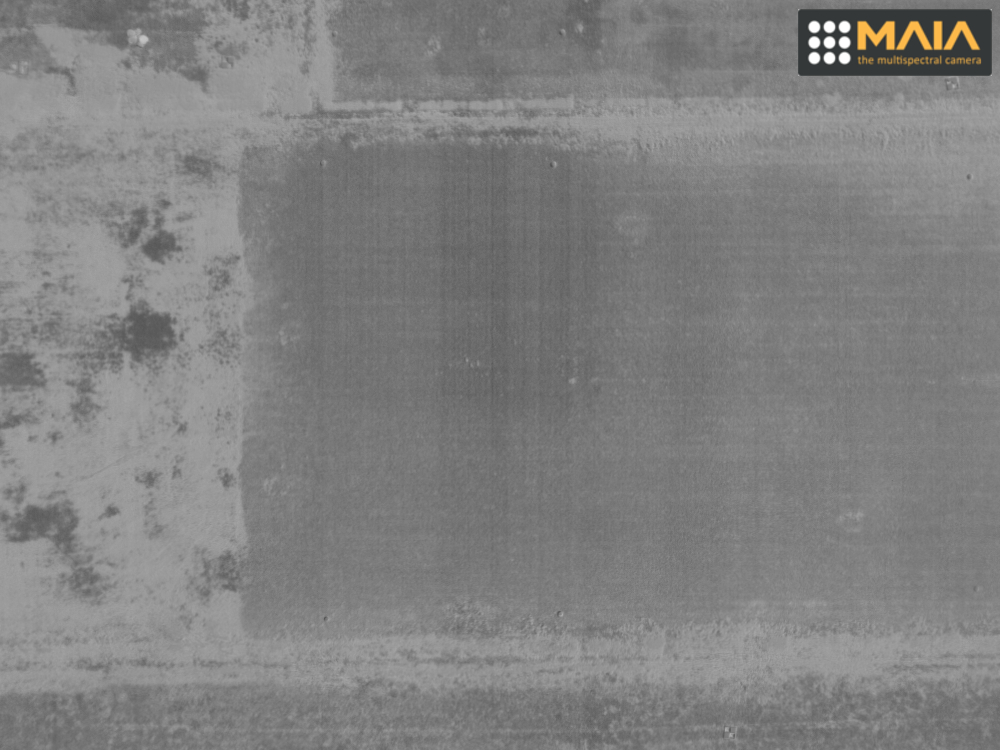
NWSI (Normalized Water Stress Index – (Coastal-Red)/(Coastal+Red)) – The reflectance information at the high frequencies of the Violet range is normalized on the Red, which in the healthy vegetation has a high absorption. High values of this index, ie those more tending to white, are found in areas with high water content within the leaf apparatus and in the soil, while low values denote a lack of water and aging or dry vegetation.
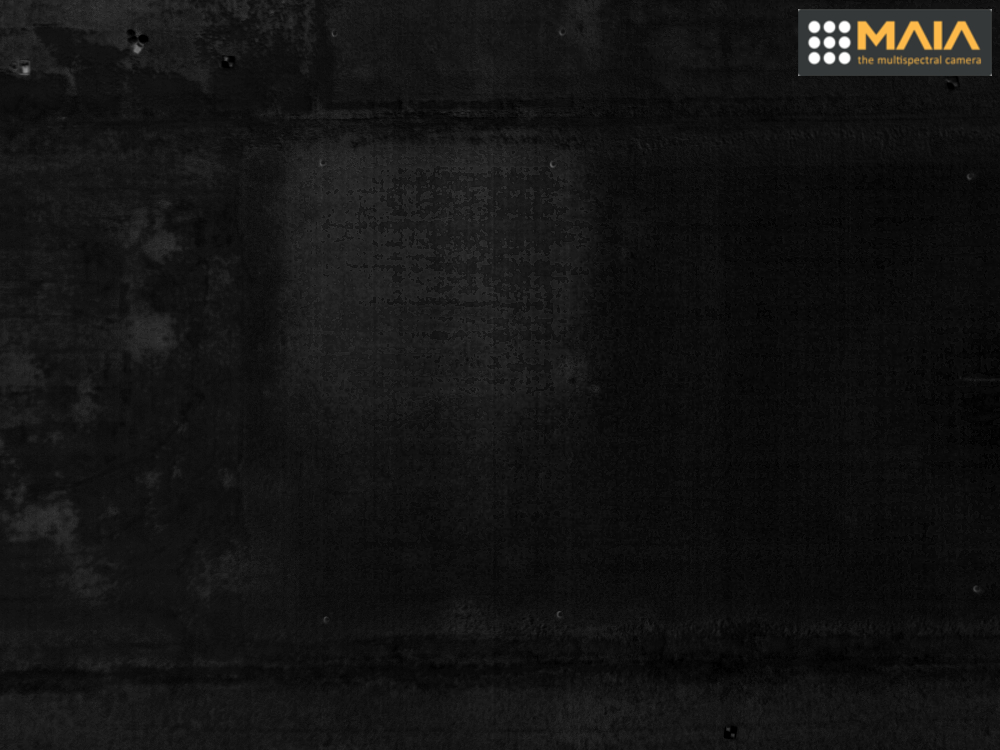
Several other multispectral vegetational indexes were calculated, like PRI, SAVI, CCCI, BWDRVI, ecc.
Scientific studies show that methods of diagnostic evaluation of the turf that use other tools are confirmed by the data obtained from the survey carried out with MAIA multispectral camera: for example, the CWSI index (Crop Water Stress Index), which is an evaluation tool for monitoring the water stress and to plan the irrigation rate, which is obtained from the plant temperature minus the air temperature, divided by the atmospheric vapor pressure deficit (AVPD) (Alderfasi, Nielsen. 2001), is positively correlated with the NWSI index above. Or the CGI (Crop Growth Index), which is a measure of the increase in size and mass of the crop over a period of time, the calculation of which depends on the values of NAR (Net Assimilation Rate) and LAI (Leaf Area Index), it is very useful if it is related to other indices such as GNDVI if we want to estimate the growth of vegetation cover over a given period of time.
Research and development in the field of multispectral data acquisition systems, both in the platform and in the field of sensors, which, with regard to image analysis, are working to give the agronomic discipline more and more cognitive tools of biological, physical phenomena and chemicals that occur within individual plants. Certain calculations are applied to the reflectance data of the individual bands, indices are calculated on the image or on the multispectral orthophoto, or the digital number values relating to specific bands are distributed in the three RGB channels to diversify the turf areas.
These data are the geo-referenced cartographic basis for all site-specific agronomic and meteorological measurements that define the culture monitoring framework. The analysis subsequent to the acquisition and processing can lead to the diagnosis and localization of the symptomatic signs of turf criticality. Some are listed here:
- Soil compaction – It consists of a crushing of the soil particles between them, with a consequent decrease of the empty spaces of the microporosity and of the macroporosity, responsible respectively for the movements of water and air in the ground. The phenomenon mainly concerns finer-textured soils (clay or silty), especially if trampled under wet conditions and only in the first 5-7 cm. Increasing the compaction therefore decreases the aeration of the soil that is depleted of oxygen, saturating itself with carbon dioxide and other toxic gases for the roots. Water movements become more difficult, the infiltration and percolation of water along the profile decreases, and therefore any water stagnation can be highlighted and localized by a differentiation in the vegetation cover of the turf.
- Water stress – A phenomenon of water scarcity can be detected and localized in the leaf apparatus or in the ground, or on the contrary an excessive intake of water or nutrients, and identify areas where there is water stagnation due to the composition of the soil or its excessive compaction; it is possible to map the texture of the soil and to distinguish the most clayey or loamy soils from the sandy ones, perhaps comparing the multispectral survey with a survey carried out with an electromagnetometer, and consequently deciding where and how to spread the lawn rolls, and how to plan the irrigation and drainage system.
- Thermal stress and humidity – The species used for most lawns for ornamental and sports use are Festuca arundinacea, Poa pratensis, lolium perenne and Festuca rubra rubra. These essences are microthermal, ie they live in optimal conditions in warm continental and temperate Mediterranean climates. This means that with temperatures above 26 degrees maximum and above the minimum of 20 they suffer from heat but above all from humidity. The humid heat favors the development of most of the pathogenic parasitic fungi of the turf: at the same temperature, the increase in humidity (the relative humidity is the moisture content in relation to the temperature) determines a “heating” of the turf which in turn triggers a series of retroactive processes that slow down the metabolic processes of the herb, increasing the state of stress. When the water vapor content increases (ie increases atmospheric humidity) the difference with the water vapor contained within the leaf is reduced: consequently the plant transpires less. By decreasing the recirculation of water between the plant that absorbs it from the soil and the external atmosphere, the leaf tends to heat up more, the whole plant increases in temperature, also accumulating a strong thermal stress. In essence, even though it may seem paradoxical, in order to continue photosynthetic processes correctly, the lawn must lose water in the right quantities to cool down and keep cool. In climatic conditions where high humidity is associated with a high level of humidity, maintenance operations must ensure that the lawn is well ventilated and drained, as well as being well watered in the cold hours. In climatic zones of dry heat, it will instead be very important to constantly bathe. The scientific literature of studies on vegetation confirms that evapotranspiration and photosynthetic activity are easily monitored phenomena with multispectral relief.
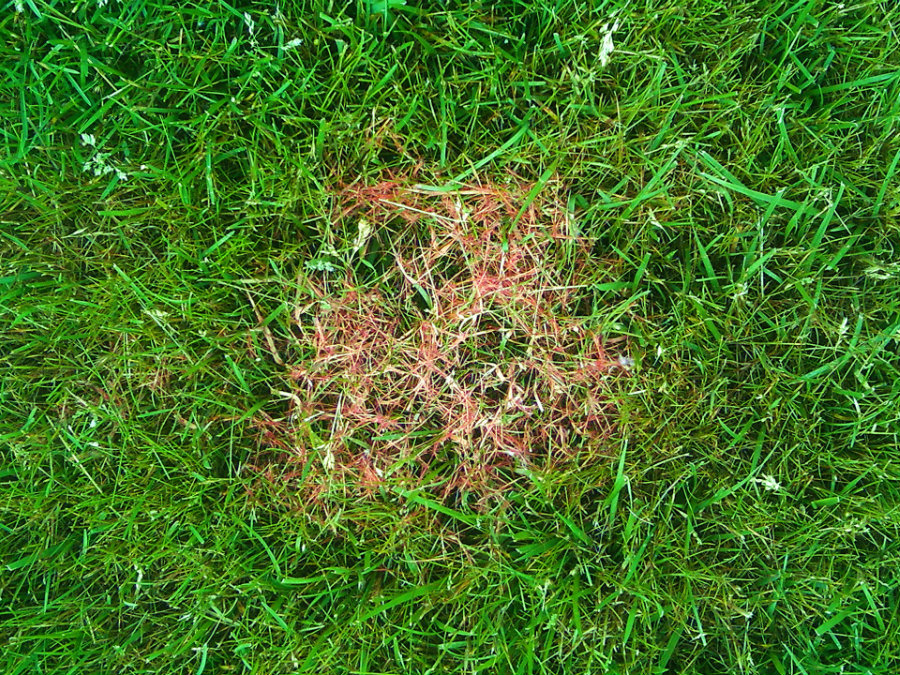
Grass fungus disease - Fungal attacks – The symptoms of a toxic contamination of the turf, however depending on the season, the humidity, the geographical area, the temperature and the surface content of water, are often represented by more or less regular and variable spots in size and in color. The multispectral survey conducted with MAIA can locate and perimeter the areas presenting fungal attacks: thanks to the high geometric and radiometric resolution of the sensors (1280×960 pixels and sensor pixel size of 3.75 μm x 3.75 μm), the symptoms of a intoxication, which are represented by widespread and generalized yellowing of the lawn, linked to the presence of many irregular spots on the leaf lamina, such as to give a general and indistinct aspect of the turf.
- Cyanobacteria and algae – They can cause various problems to grass surfaces: they alter the appearance, block the possibility of light reaching the grass and can make the surface slippery. The Nostoc, for example, are cyanobacteria that create dark green or blackish gelatinous growths, which often appear in conditions of high humidity over the entire surface of the lawn, making it slippery. Lichens are brown or gray growths that grow horizontally in the turf always in autumn / winter, when we can also find white, yellow or orange molds that produce small gray fruiting bodies that then release masses of violet spores – Bruno. Cyanobacteria, lichens and liverworts are found on meadows where drainage is scarce and shadow conditions cause a wet surface. The compacted soil is particularly prone to developing algae, particularly around the drip line of trees or shrubs.
The analysis of the results obtained can be done on GIS softwares, where geo-referenced informations can be managed, and where there are several tools to graphically show and map those areas with different condition on the turf, so as to provide the agronomists a precise diagnostic tool on which to base the crop monitoring plan. It is also possible to integrate the multispectral images and the reflectance data of each single pixel obtained from the multispectral survey in the cultivation management software that the agronomist uses for maintenance.
Thanks to the multispectral survey, information can be obtained for:
-
Rationalize fertilizing by localizing symptoms of nutritional deficiencies
-
Choose frequencies and right moments for mowing and monitor the consequences
-
Choose the best performing species based on acquired environmental and multispectral data
-
Rationalize pesticide applications by identifying biotic stress in advance
-
Rationalize the supply of fertilizers through localized and site-specific interventions
-
Rationalize water supply by identifying areas with real water scarcity
-
Prevent fungal attacks on the turf by promptly intervening
-
Avoid excessive compaction by monitoring the consequences in real time
-
Enrich the land with sustainable long-term fertilization plans
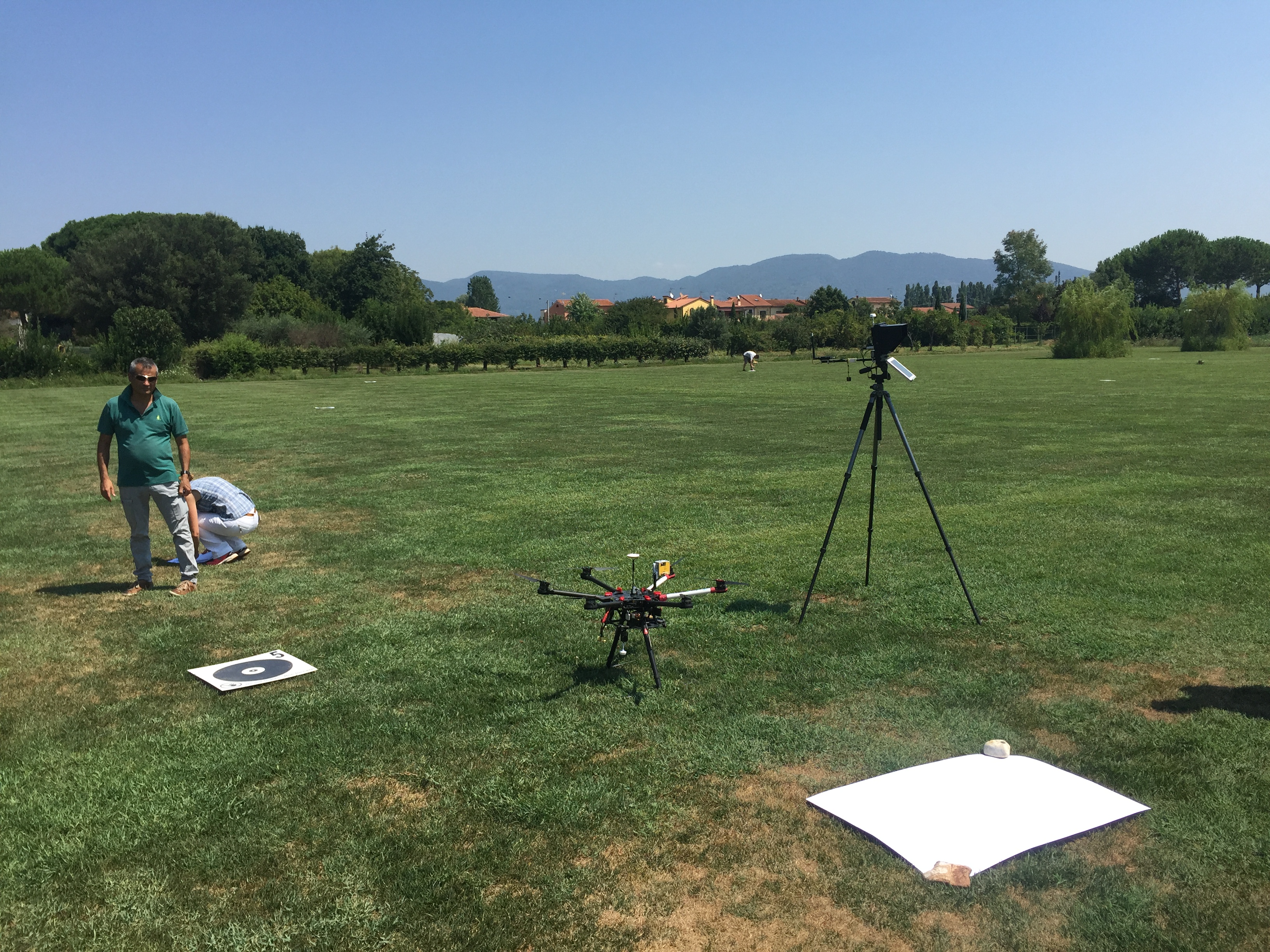
The analysis of vegetative criticalities on turf for sporting or ornamental use has the purpose of highlighting the factors limiting the correct metabolism of the planted species and therefore the vegetative activity of the vegetation cover. The aim is to optimize growth, promote the development of the root system and make the crop uniform, in a crop management that could be more and more sustainable.
MAIA Multispectral Camera is a project of the highest technological value entirely Made in Italy. It is the right tool to carry out the preventive diagnostic phase at specific times of the year, where certain phyto-vegetative conditions are expected, to have orthorectified and geo-referenced images, and cartographic analysis products obtainable from them.
The early identification of the critical issues has in fact a positive effect on the qualitative yield, on the ability to withstand stresses and on management costs: a seasonal monitoring plan of the turf can no longer ignore such a multispectral proximity survey.
